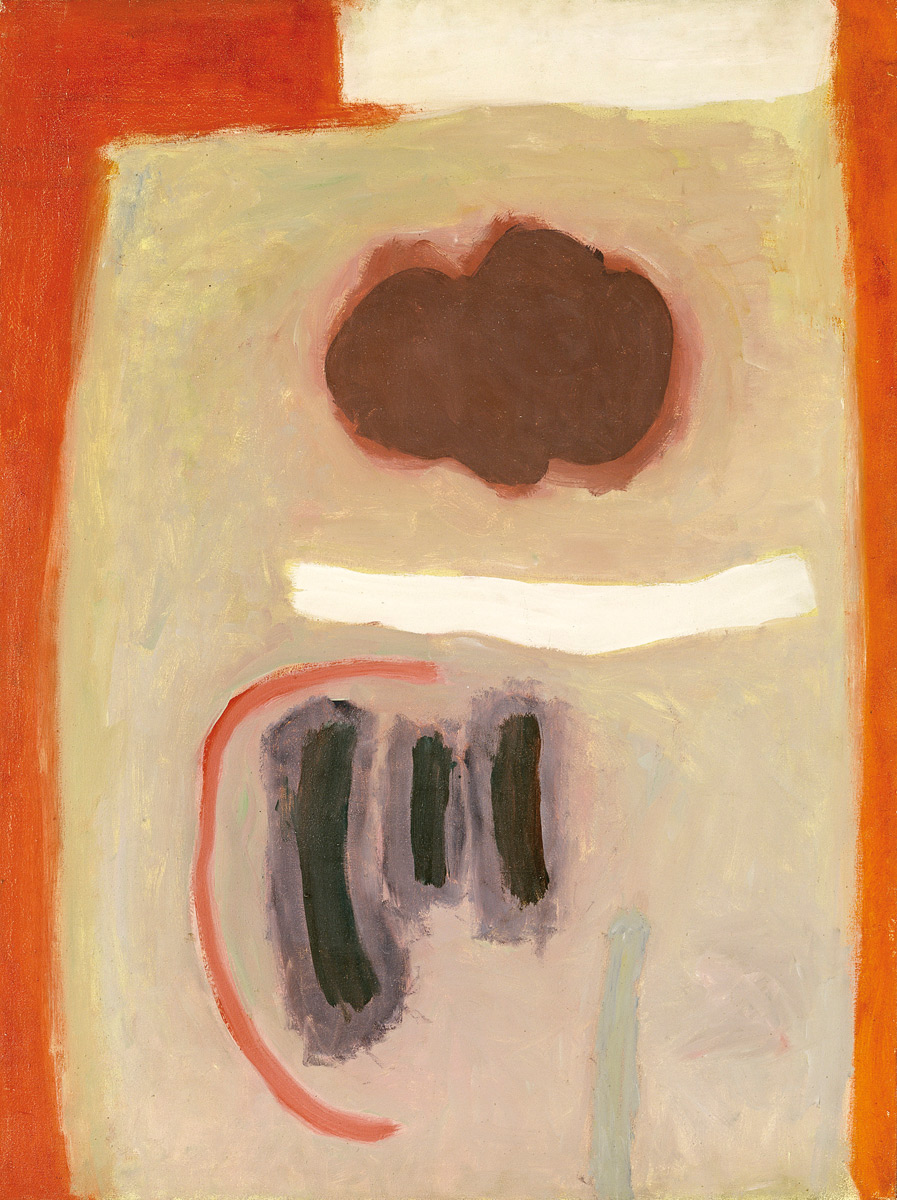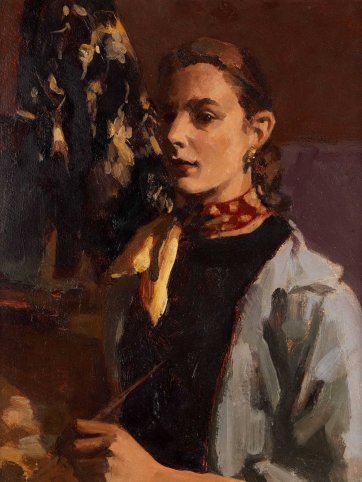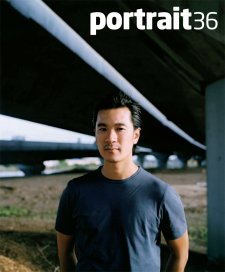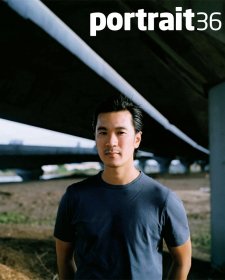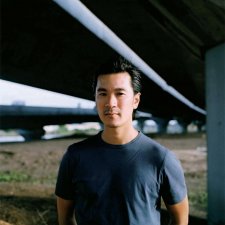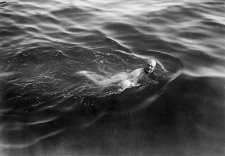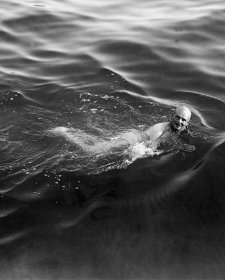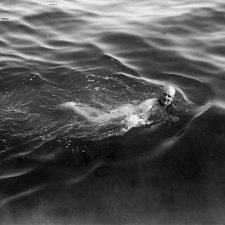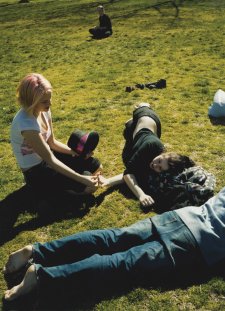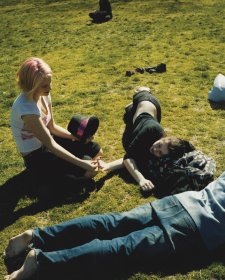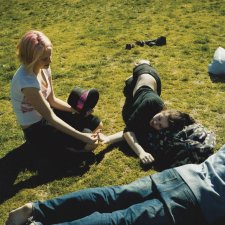As in the best of self portraits, this artist regards herself with an assured but scrutinising, serious gaze. She presents herself in archetypal artist mode: standing at her easel with palette in hand, a perky polka dot scarf at her throat and a smock thrown over her day-job clothes.
The figure and its setting are modelled in the subdued colours typically found in the tonal realist portraits that some have argued were the mainstay of Australian portraiture in the mid twentieth century. It might be surprising, then, that it is a portrait of and by an artist who, within a decade, would make her mark on the Australian art scene as a leading exponent of abstraction.
Born in Sydney in 1935, Janet Dawson spent the first six years of her life in the rural New South Wales town of Forbes. In an interview recorded in 1997, she recalled her childhood as one spent with her ‘nose close to the ground’ and characterised by an interest in nature, ‘in making and doing’. Dawson’s mother, herself a one-time student of Will Ashton’s, recognised her daughter’s talent for art early and was advised by Ashton to encourage it with a plentiful supply of pencils and paper. In 1941, Dawson’s family moved to Melbourne and it was here that she received her first formal lessons in art. Aged eleven, Dawson attended the private art school run by artist and illustrator Harold Septimus Power. Here – the only child among Power’s students – she began her training in traditional academic fashion, making drawings of plaster casts in charcoal. She was sixteen when she entered the National Gallery School, Melbourne, one of the country’s most eminent training grounds for artists at the time and known for its production, since 1867, of an alumni that included George Lambert, Hugh Ramsay, Sid Nolan and Fred Williams. Dawson studied under Alan Sumner and William Dargie, who she regarded as a fine teacher and whose tutelage is evident in this self portrait, painted during an evening class at the school in 1953.
After three years of study, in 1956, Dawson was awarded a National Gallery of Victoria Travelling Scholarship and went to London, enrolling at the Slade School of Fine Art and at the Central School, and specialising in lithography and etching. Another scholarship, awarded by the Slade, underwrote further study and travel in Europe. She spent time in Italy and working in a printmaking studio in Paris, in the midst of this taking in landmark exhibitions and the work of monumental names in abstract art: Kandinsky, Pollock, Rothko. Back in Australia, Dawson’s first solo exhibition at Melbourne’s Gallery A in 1961 presented something of a challenge in a city with such a distinguished and dominant tradition of figure painting. This exhibition and her subsequent work with Gallery A – first in Melbourne and then Sydney – has since seen Dawson counted as a pioneer of colourfield painting and a key figure in abstract art in Australia in the 1960s.
But, as noted by artist James Gleeson in 1968, Dawson’s work has never been ‘bound by rules or preconceived restrictions’, and since this time she has become known for her diverse output – ranging between media, techniques and genres; mining the rich lode of visual possibilities in subjects as diverse as landscapes, gum trees, birds, and cabbages; and encompassing both abstract and figurative styles. While abstraction, in the words of one art historian, was ‘the platform on which Dawson came to prominence’, figuration – and particularly portraiture – has always been a part of her work and a thread that runs through her career of over five decades. She won the Archibald Prize – the third woman to do so – in 1973 with a portrait of her husband, actor and writer Michael Boddy, and throughout her career has maintained the practice of painting and drawing her family and friends: a tradition started with this fresh, confident and understated self portrait of the eighteen year-old artist on the verge of a celebrated career.
